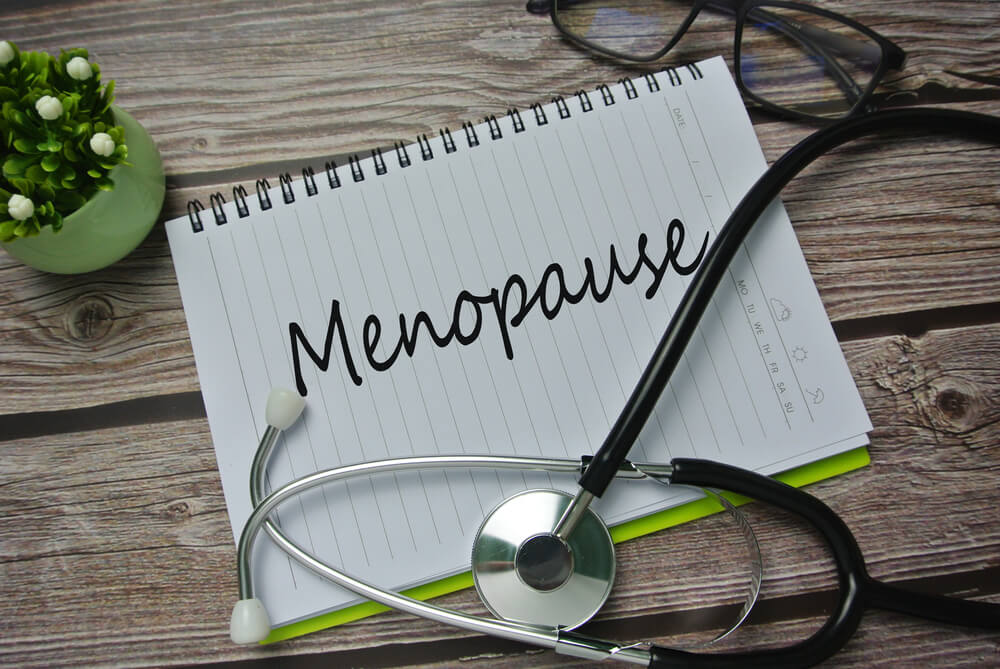Vaginal bleeding after menopause can be diagnosed by seeing your doctor. Your doctor can do a review of your medical history and a physical exam. They may also want to order a transvaginal ultrasound. The ultrasound will see if you have growths. A small probe will be placed into your vagina. It will send off sound waves to create a picture of the inside of your body to give your doctor a better view of what’s going on inside your uterus.
They will take a small sample of the tissue that lines the uterus. Then they will send it to a lab to see if there’s anything unusual occurring. The lab will check for polyps, cancer, or a thickening of the uterine lining. Your doctor may also want to perform a D&C, which stands for dilation and curettage. During this procedure, the doctor will open your cervix while using a thin tool to scrape or extract a sample of the uterus lining. They will send the sample to a lab that will check for polyps, cancer, or a thickening of the uterine lining, which is known as endometrial hyperplasia.
The most common causes of postmenopausal bleeding are inflammation and thinning of the vaginal lining (atrophic vaginitis) or womb lining (endometrial atrophy) – caused by lower estrogen levels. cervical or womb polyps – growths that are usually non-cancerous.
Additional Causes of Vaginal Bleeding During Menopause

Vaginal bleeding after menopause can be extremely uncomfortable and catch you off guard. Spotting during menopause can be caused by many things. Let’s first define what menopause is. From a clinical sense, when a woman has not had her period for 12 months, she is considered to have entered menopause.
So, what is the most common cause of postmenopausal bleeding? There may be several culprits, mainly the following:
- Cancer of the cervix
- Cancer of the vagina
- Thinning of the tissues lining around the uterus
- Uterine fibroids
- Cancer of the uterus
- Endometrial cancer
- Infection of the uterine lining (endometritis)
- Medications like hormone therapy and tamoxifen
- Trauma in the pelvic area
- Uterine sarcoma
- Bleeding from the urinary tract or rectum
- Endometrial hyperplasia
- Uterine polyps
Spotting during menopause can also be caused by sexually transmitted diseases such as gonorrhea, and chlamydia can also cause post-menopausal bleeding and strenuous exercise. Make sure to get checked out by your doctor if you are concerned.
When spotting during menopause you can try a few things at home to ease the bleeding. You can consider using a menstrual cup, because you may need to change this less than any tampon or pad. You can also try a heating pad, which can help reduce common period symptoms, which may include cramps and or discomfort in your stomach. Make sure you get plenty of sleep and wear thick underwear or a pad to bed.
If you are spotting during menopause, you may want to consider adding soybeans, soy products, and even flaxseed to your diet. In addition, exercising for 30-45 minutes per day can get your blood flowing and has the potential to balance out your hormones. Oral estrogen can be helpful, and you will want to consult your doctor about that. If bleeding after menopause still persists, then it may be time to seek out a doctor.
Some Other Treatments for Vaginal Bleeding After Menopause Is:

Estrogen therapy. Your doctor may prescribe you estrogen as a treatment. This treatment can be in the form of a pill, vaginal cream, tablet, or vaginal ring. This hormone is used to treat vaginal and endometrial atrophy if this is what your doctor determines that you have. In addition, your doctor may also prescribe you Progestin therapy in a pill or a shot form. There is also a procedure known as hysteroscopy, which can remove polyps if that is the cause of your postmenopausal bleeding.
Fleshy tissue discharge can also be an issue while you are in menopause. Whether you have a large amount or anything that seems like an irregular discharge, it’s important to note that it could be a severe issue, but it can be something less serious in many cases.
There are many ways to approach fleshy discharge. You may want to consider going the supplement route as you may be deficient in certain vitamins and minerals. You can try vitamin E, beta carotene, B Vitamins, Omega-3 fatty acids, vitamin B, and omega fatty acids.
Off-balance hormones can cause fleshy discharge. Hormones are the chemicals that carry messages from the brain to the organs, which control the function and health of these organs. Your hormones control many, if not all, basic functions such as eating, sleeping, and even your sex drive.
The endocrine system is responsible for producing hormones. This system has several gland types, and each of them produces different hormones. For instance, the glands in the pancreas manufacture insulin to regulate our blood sugar, the pituitary gland produces growth hormones. At the same time, the testes and the ovaries are responsible for producing sex hormones for males and females.
One reason for this can be that your estrogen levels are at a very low level. It is similar to when a woman gets vaginal discharge as part of their monthly period cycle. Vaginal discharge is a normal part of the woman’s period cycle. Usually, the amount of discharge will be smaller than in the case of menopausal bleeding.
Some vaginal discharge infections are commonly described as watery and foul-smelling discharge, which may be yellow and have a fishy smell. You will want to pay close attention to your personal hygiene, the material of your underwear, medications, and your diet.
Postmenopausal Bleeding is defined as any bleeding post-menopause. It does not matter how much blood or for how long you are spotting. Up to 25-35% of women experience it.
In most cases, postmenopausal bleeding is most commonly associated with the shift of hormones. There are instances where abnormal cells can be developing in your uterus. This can be a sign of something not as serious such as hyperplasia of the uterus, and it can also be a more serious issue such as uterine cancer.
The good news is that most of these possibilities have treatments that have successful outcomes. If you feel that it is more complicated, it may require attention as soon as you start spotting. It’s important to see a healthcare professional and get evaluated.
When a woman sees her doctor for an opinion regarding postmenopausal bleeding, more times than not, she’s given the go-ahead to resume back to normal life with no further treatment being necessary. It’s important to make sure you see your ob-gyn at least one time per year.
Reach Out
No matter what you are going through regarding vaginal bleeding after menopause, fleshy discharge, or spotting after menopause, there are solutions for you. It’s important to understand the causes. And more importantly, to exercise all of your options when it comes to the best treatment for you. When it comes to your health, these irregularities can be scary, and it may be time to seek professional medical advice from a top ob-gyn.


